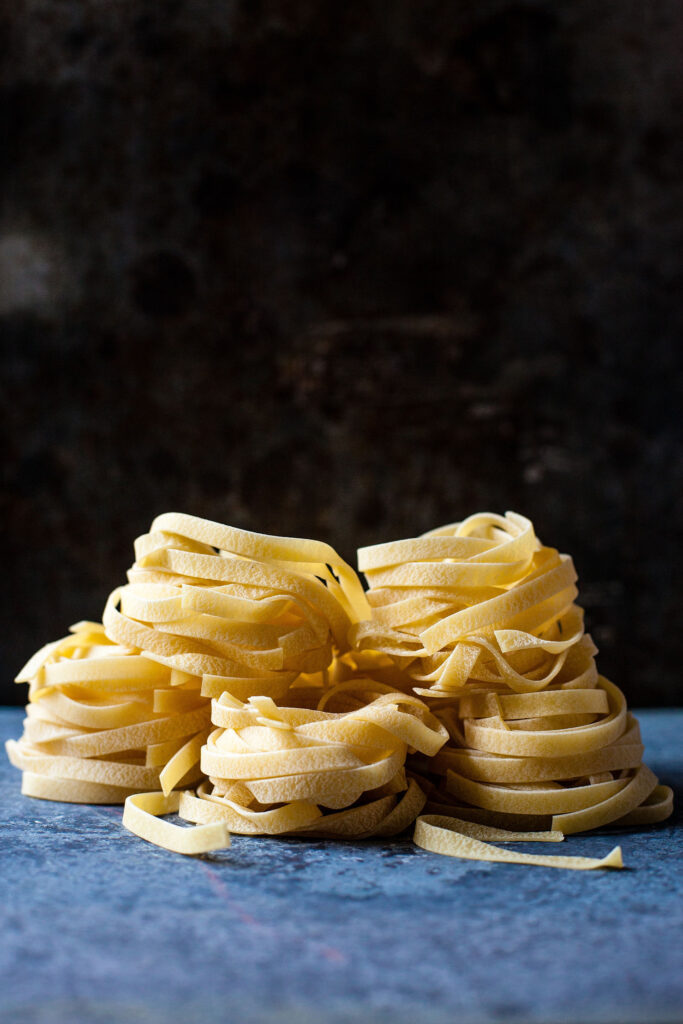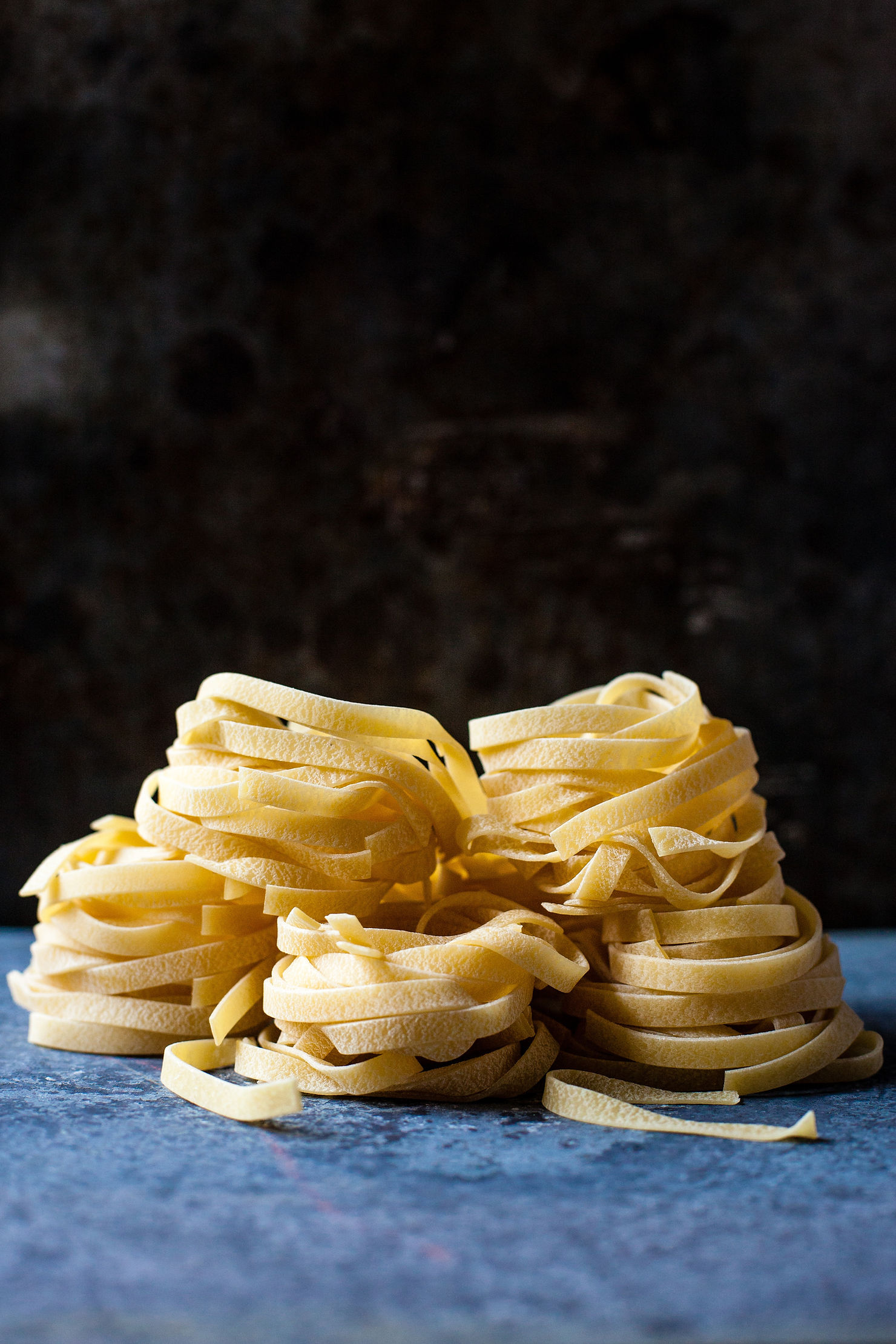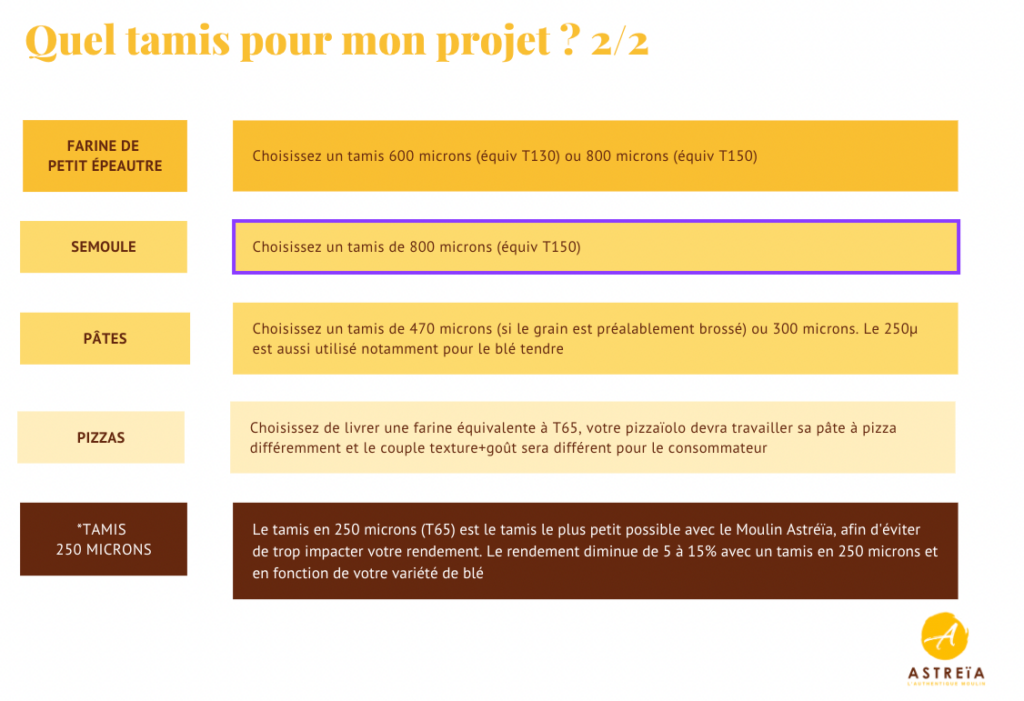Which sieve to choose for making pasta?
Depending on the sieve you choose, your flour will be more or less wholemeal and so will your pasta.
What is the advantage of making pasta from wholemeal flour?
- make a difference compared to store-bought pasta
- nutritious pasta
- digestible pasta
- that cooks well
You can choose any sieve to make your pasta, because it’s your recipe that will make the difference. If you choose a 300 or 470 micron sieve, you’ll be making flour pasta that will make a clear difference at the point of sale.

Food standards: let’s talk about semolina
Often, when our customers are new to the field, they see ‘semolina’ written in the food standards. In France, we often confuse the word ‘semolina’ with couscous. This has nothing to do with couscous. Semolina is in fact what we call the products of milling. So it has nothing to do with the thick granulometry of couscous (even if you can make couscous with your own mill if you like!).
Would you like to make dry pasta?
If you want to make dry pasta, you’ll use a machine that acts like a ‘press’ to squeeze your recipe into the pasta shape you’ve chosen. Through this ‘pressing’ action, the machine automatically removes moisture and water. So the pasta will always be a little drier as a result of the machine’s action.
What is your recipe and how will the pasta hold up when cooked?
If you use wholemeal flour to make your pasta, your recipe will generally be a little drier (less water) and, thanks to the action of the pasta machine, your pasta will be less moist and will often hold together better when cooked.
Wholemeal flour + less water in the recipe = better cooking properties.
As our bakers do, we recommend that you test your flour, your recipes and your dosages to find the cooking time and water content that are best suited to what you want to sell! That way, you can tell your customers which baking time is best suited to their tastes.
To sum up, to choose the mill sieve for making pasta :
- do you want to sell dry pasta?
- do you want wholemeal flour for fully nutritious pasta?
- How much water is added during the recipe?
- What kind of press is used to make the pasta?
- What is the cooking time indicated for your customers?
Based on these questions and your answers, you’ll know whether you need a T80 flour sieve or a sieve for a more complete flour such as T110, T130 or even T150, depending on your recipe, baking properties and the nutritional content your customers expect!
An example from Ferme Pastière
Nicolas has chosen to equip his farm with an Astréïa mill to transform his cereals into flour, which he then turns into pasta.
You will no doubt have seen the PRIORITERRE report on him on France3 Région.
You can see his project clearly and visit the different exchange zones for a collective and coherent project. What we’re talking about here is challenging a system by proposing an alternative way of feeding families. All in a short circuit, of course.
Nicolas was able to set up his project with the support of people and organisations who believed in the relevance of :
- organic farming
- no-till farming
- on-farm production
- short distribution channels
- healthy, varied and nutritious food
Our partner for your pasta machine : Italgi
We work hand in hand with Italgi to offer you pasta machines directly when you define your project. You can come and see the flour mill at Astréïa, then go to Italgi for pasta machine training and get fitted out. You can also choose to do this in several phases, in which case you will have full support for your equipment from 2 professionals working together.

Find out how we can support your project from A to Z, drawing on a range of different skills and unique expertise.



